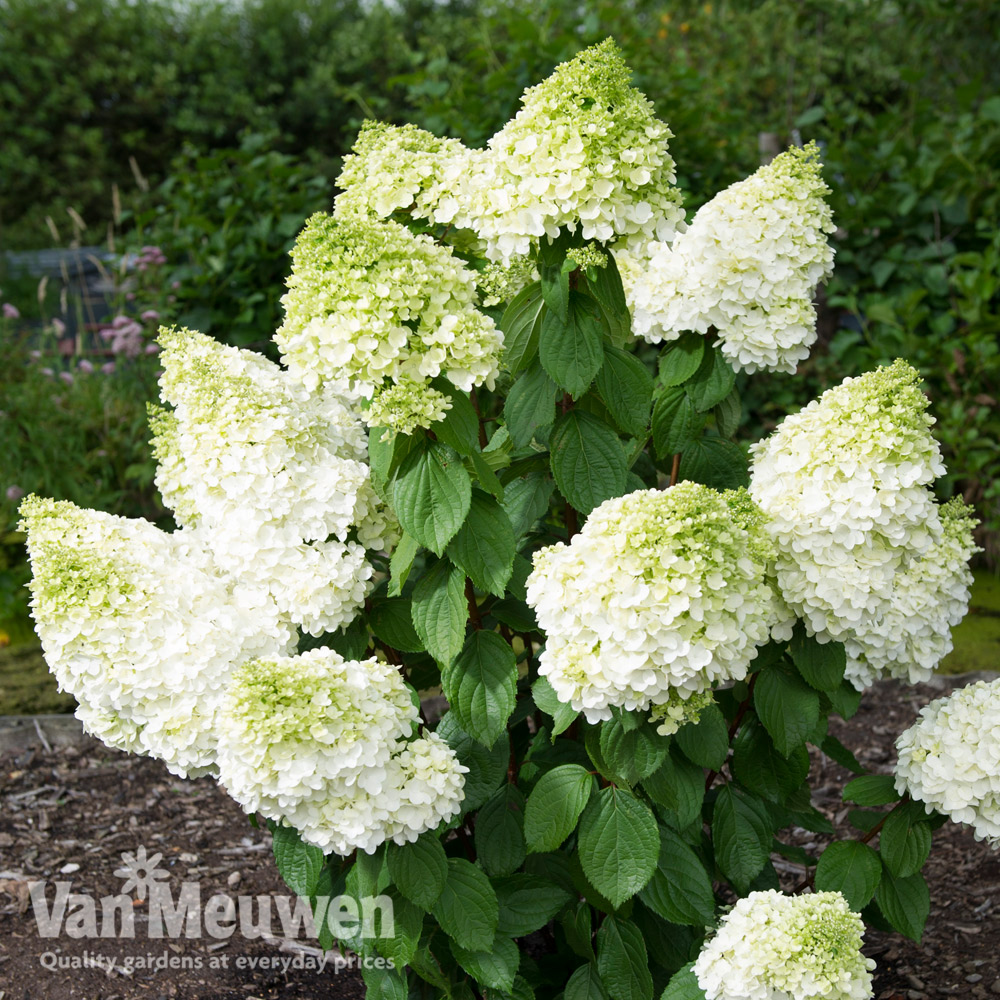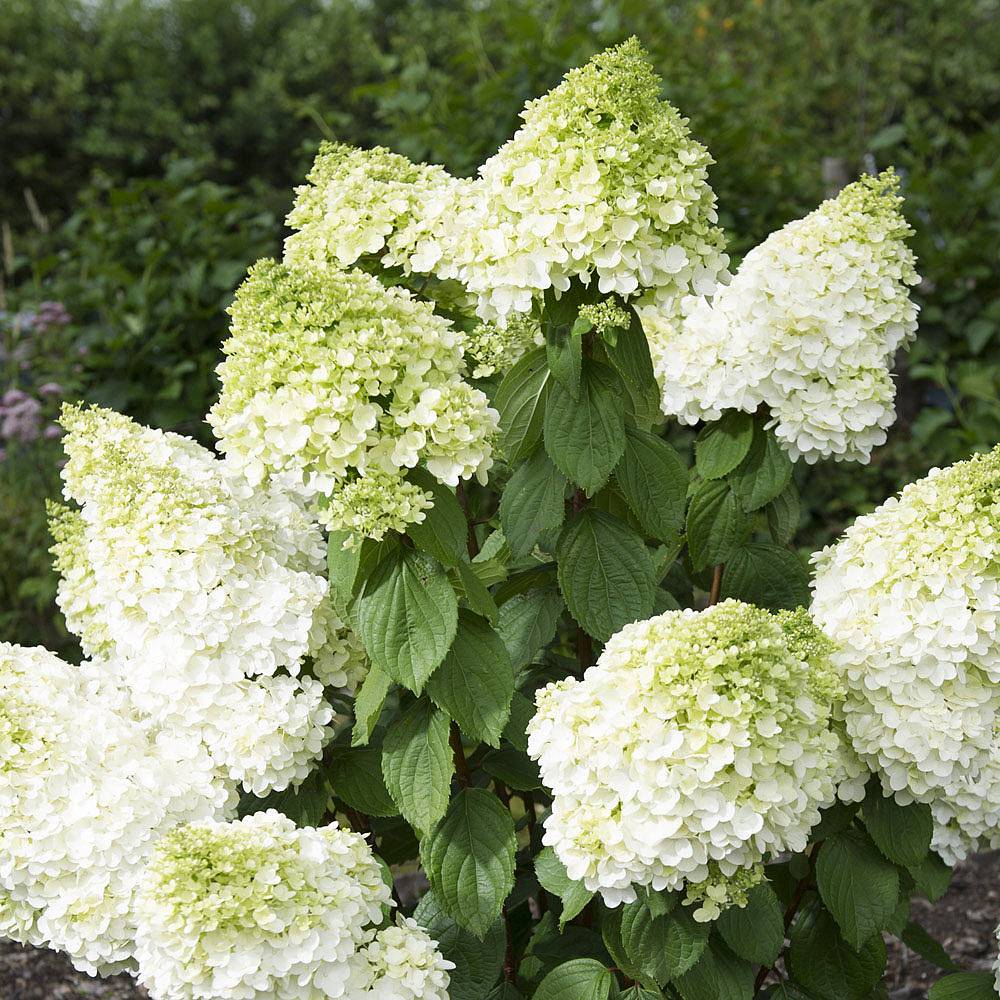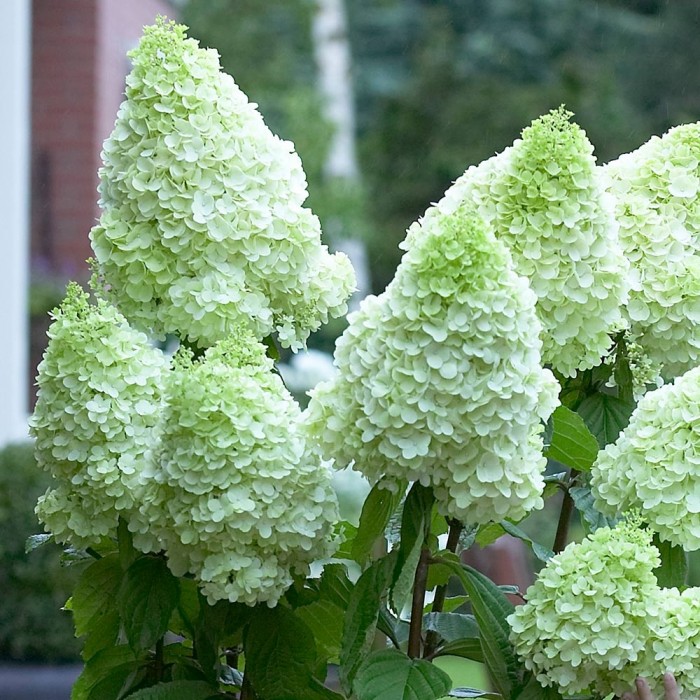Grow Your Own Magical Moonlight Hydrangeas
Grow Your Own Magical Moonlight Hydrangeas
Hydrangeas are some of the most popular flowering shrubs in the world, and for good reason. They come in a wide variety of colors, shapes, and sizes, and they can add a touch of elegance to any garden. If you're looking for a hydrangea that is both beautiful and easy to care for, then you should consider growing Magical Moonlight hydrangeas.
Magical Moonlight hydrangeas are a type of panicle hydrangea, which means that they produce large, cone-shaped flowers. The flowers of Magical Moonlight hydrangeas are a soft, greenish-white color, which gives them a magical, moonlit appearance. They bloom from midsummer to fall, and they can reach heights of up to 6 feet.
Magical Moonlight hydrangeas are relatively easy to care for. They prefer full sun to partial shade, and they need moist, well-drained soil. They are also relatively drought-tolerant once they are established.
To plant Magical Moonlight hydrangeas, choose a site that receives full sun to partial shade. The soil should be moist, but well-drained. Amend the soil with compost or manure before planting. Dig a hole that is twice as wide and as deep as the root ball of the hydrangea. Place the hydrangea in the hole and backfill with soil, tamping down gently. Water the hydrangea well.
Once your Magical Moonlight hydrangea is planted, water it regularly, especially during the first year. Mulch around the base of the plant to help retain moisture. Fertilize the hydrangea in spring with a balanced fertilizer.
Magical Moonlight hydrangeas are relatively pest- and disease-free. However, they may be susceptible to powdery mildew. If you see powdery mildew on your hydrangea, you can treat it with a fungicide.
With proper care, your Magical Moonlight hydrangeas will thrive for many years. They will add a touch of elegance and beauty to your garden for years to come.
[MAIN CONTENT]
Here are some additional tips for growing Magical Moonlight hydrangeas:
- Prune your hydrangeas in late winter or early spring. This will help to encourage new growth and flowers.
- If you live in a cold climate, you may need to protect your hydrangeas from winter cold. You can do this by covering them with a burlap sack or other protective material.
- If you want to change the color of your hydrangeas, you can do so by adjusting the pH of the soil. For example, if you want your hydrangeas to be blue, you can add aluminum sulfate to the soil. If you want your hydrangeas to be pink, you can add lime to the soil.
Folklore of Hydrangeas
Hydrangeas have a long history of folklore and symbolism. In Japan, hydrangeas are associated with heartfelt emotion, gratitude, and apology. According to a Japanese legend, the hydrangea became associated with these emotions after a Japanese emperor gave them to the family of the girl he loved to make up for neglecting her in favor of business and show how much he cared about her.
In Western cultures, hydrangeas are often associated with love, happiness, and friendship. They are also sometimes seen as a symbol of impermanence, as their flowers fade quickly.
Conclusion
Magical Moonlight hydrangeas are a beautiful and easy-to-care-for plant that can add a touch of elegance to any garden. With proper care, they will thrive for many years to come.
If you're looking for a stunning hydrangea variety that will add a touch of elegance to your garden, look no further than Hydrangea paniculata 'Magical Moonlight'. This graceful shrub produces large, cone-shaped clusters of creamy white flowers that bloom from midsummer to fall. The flowers are especially beautiful in the evening, when they take on a soft, silvery glow.
In addition to its beauty, Hydrangea paniculata 'Magical Moonlight' is also a relatively easy plant to care for. It prefers full sun to partial shade and moist, well-drained soil. To keep your plant healthy, be sure to water it regularly, especially during the summer months. You may also want to fertilize it once a year in the spring.
If you're interested in learning more about Hydrangea paniculata 'Magical Moonlight', I recommend visiting . This website has a wealth of information about the plant, including its care requirements, planting instructions, and pest and disease control tips.
FAQ of hydrangea paniculata magical moonlight
Q: What is hydrangea paniculata magical moonlight?
A: Hydrangea paniculata magical moonlight is a type of hydrangea that is known for its beautiful, pale pink flowers. It is a relatively new cultivar, first introduced in 2008. Magical moonlight hydrangeas are hardy in USDA zones 5-9, and they can grow to be 6-8 feet tall and wide. They prefer full sun to partial shade, and they need well-drained soil.
Q: What are the best care tips for hydrangea paniculata magical moonlight?
A: Here are some of the best care tips for hydrangea paniculata magical moonlight:
- Plant in full sun to partial shade.
- Water regularly, especially during the first year after planting.
- Fertilize in spring and fall with a balanced fertilizer.
- Deadhead spent blooms to encourage new growth.
- Protect from frost in winter.
Q: What are the common pests and diseases of hydrangea paniculata magical moonlight?
A: The most common pests of hydrangea paniculata magical moonlight are aphids, spider mites, and scale insects. The most common diseases are leaf spot, powdery mildew, and root rot.
- Aphids are small, soft-bodied insects that feed on the sap of plants. They can cause leaves to wilt and become discolored. To control aphids, you can use insecticidal soap or neem oil.
- Spider mites are tiny, eight-legged arachnids that feed on the undersides of leaves. They can cause leaves to become stippled and yellow. To control spider mites, you can increase the humidity around the plant or use insecticidal soap.
- Scale insects are small, oval insects that attach themselves to the stems and leaves of plants. They can cause leaves to become yellow and drop off. To control scale insects, you can use insecticidal soap or horticultural oil.
- Leaf spot is a fungal disease that causes round, brown spots to appear on leaves. To control leaf spot, you can remove infected leaves and apply a fungicide.
- Powdery mildew is a fungal disease that causes a white, powdery coating to appear on leaves. To control powdery mildew, you can increase the humidity around the plant or apply a fungicide.
- Root rot is a fungal disease that causes the roots of plants to rot. This can be fatal to plants. To control root rot, you can improve drainage around the plant and avoid overwatering.
Q: How do I propagate hydrangea paniculata magical moonlight?
A: Hydrangea paniculata magical moonlight can be propagated by air layering or by taking cuttings.
- Air layering: This method involves making a cut in the bark of the plant and then wrapping the cut area with moist sphagnum moss. The moss will help to root the cutting.
- Taking cuttings: This method involves taking a 4-6 inch cutting from the plant and rooting it in a pot of moist potting mix.
Q: How long does hydrangea paniculata magical moonlight live?
A: Hydrangea paniculata magical moonlight can live for up to 50 years if properly cared for.
Image of hydrangea paniculata magical moonlight
5 different images of "hydrangea paniculata magical moonlight" from Pinterest:
- Image 1: A white hydrangea paniculata Magical Moonlight in full bloom. The flowers are large and fluffy, with a delicate pink blush.

- Image 2: A close-up of the flowers of a hydrangea paniculata Magical Moonlight. The petals are a soft pink color, with a hint of green at the center.

- Image 3: A hydrangea paniculata Magical Moonlight in a garden setting. The flowers are surrounded by green foliage, and the background is a blue sky.

- Image 4: A hydrangea paniculata Magical Moonlight in a vase. The flowers are arranged in a simple vase, and the background is a white wall.

- Image 5: A hydrangea paniculata Magical Moonlight in the evening. The flowers are lit up by the setting sun, and the background is a warm orange sky.

Post a Comment for "Grow Your Own Magical Moonlight Hydrangeas"